
Here’s a virtual flight made on a flight simulator using Microsoft Flight Simulator software. A Beech Baron BE-58 left Key West Airport, Florida (KEYW) a few minutes ago, heading for the CVN78 USS Gerald R. Ford aircraft carrier.
In the real world, this just isn’t done. But in flight simulation, anything goes. Above, the aircraft completes the downwind leg of its approach to the carrier.
On stabilized final with full flaps and landing gear down, the focus is on the approach angle and stall speed, which stands at 73 knots.
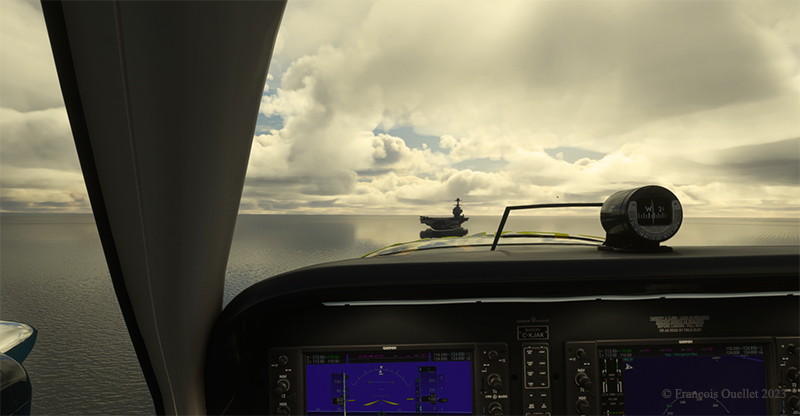
You can’t rely on a cable to stop the plane, so you need the lowest possible speed and good brakes to land it on the 333-meter bridge. Below, the Beech attracts a little curiosity as it circulates to find temporary parking.
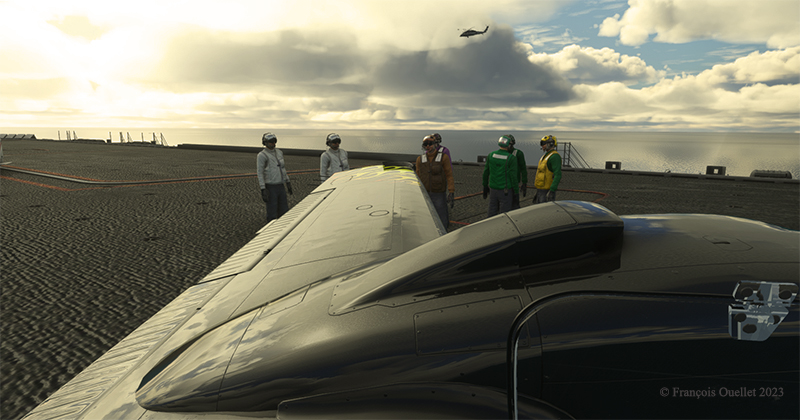
The virtual pilot then parks the aircraft for the next day.
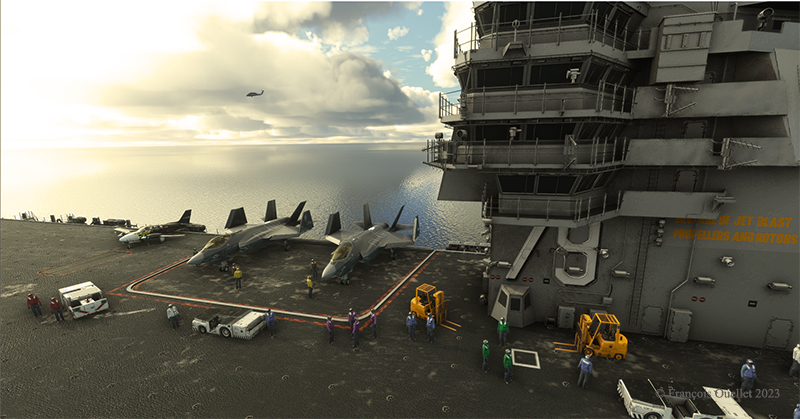
The next two images show the aircraft carrier facing a storm the following evening, with winds blowing at 35 knots during a thunderstorm. On deck, the first aircraft on the left is our Baron Be-58, holding its own. If the storm doesn’t blow it overboard, the military will soon!
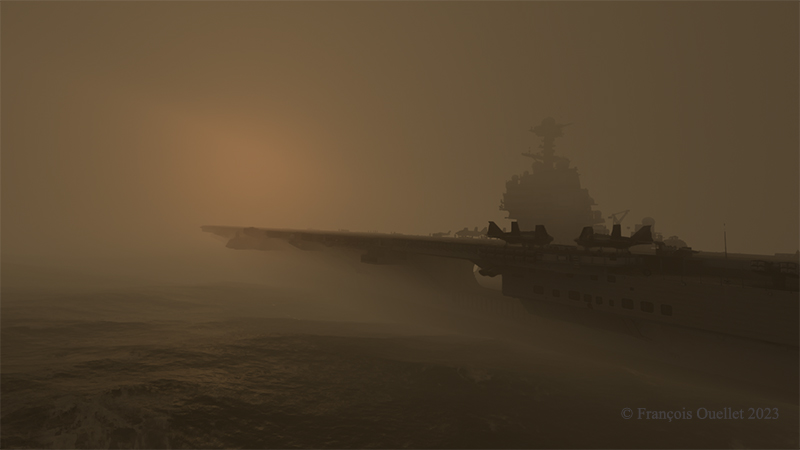
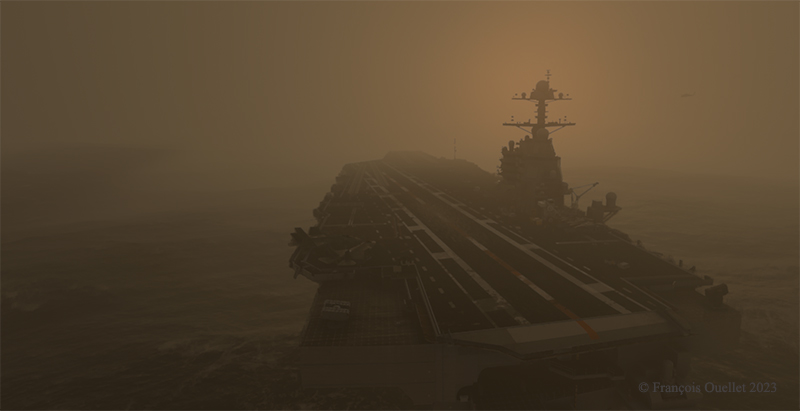
Click on the link for other challenging virtual flights on my blog.